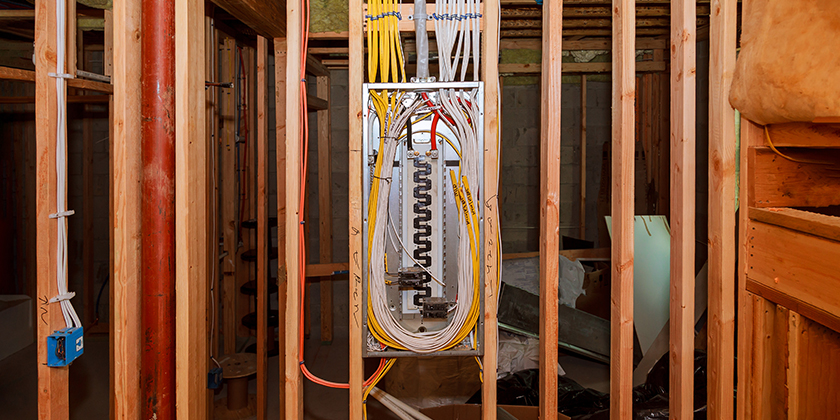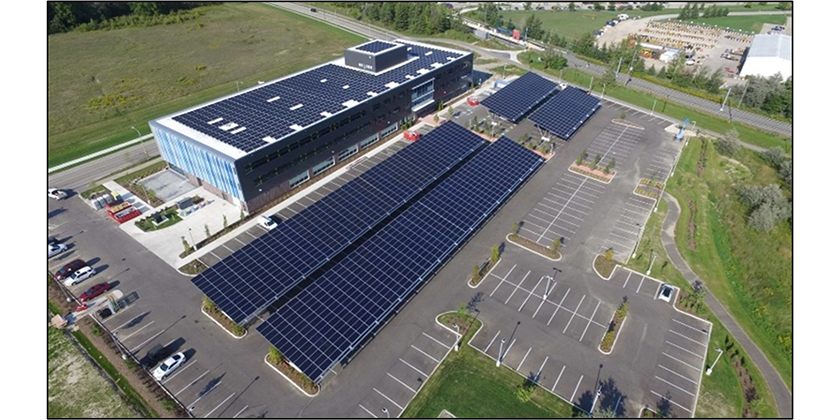Electrician Job Vacancies & Assessing Labour Shortages in the Electrical Trade

January 25, 2024
Electrician Job Vacancies
A report from Statistics Canada illustrates the electrician labour shortage in Canada, although the data looks at 2021 and 2022, it provides insight into where the industry is at with job vacancies for qualified electricians.
For the thrid quarter of 2022, there were 5,275 job vacancies for construction electricians, which is up by 1,995 vacancies from the the same quarter in 2021. 97% of vacancies are for full-time positions, and 27% of those have been vacant for 120 days or more. Compared to thrid quarter of 2021, when 11% of vacant positions had been open for 120 days or more.
New apprentices and certifications were up for 2022 compared to 2021, however those figures are still below pre-pandemic levels.
From 2020 to 2021 there was a 37% rise in new apprenticeships and in 2021 there were 8,109 new certifications.
The average hourly wage for qualified electricians for open positions in 2022 was $32.35, the average for positions without education requirements was at $20.20/hour.
Business locations decreased slightly from 27,197 to 27,098.
“Spurred on by growth in the construction industry and high demand for housing, Quebec (+1,026 certifications or +133.6%) and Ontario (+765 or +34.3%) led this charge. Quebec, in particular, granted its highest number of certifications to electricians on record,” noted the Stats Can report.
Assessing Labour Shortages in the Electrical Trade
Electrical Industry News Week recently conducted its annual survey of electrical contractors. Survey respondents identified labour shortages as the third highest pain point behind material sourcing and inflation. The feedback we have received from electrical contractors offers a few insights into areas of the certification system that may need attention in order to alleviate looming pressures of an aging work force and an economy transitioning towards electrification.

17% of respondents had labour shortage as their top pain point and it had a average score of 3.79 out of 6, compared to 4.86 for Inflation and 4.75 for Material Sourcing. 30% of respondents listed Inflation as their top pain point and 37% listed Material Sourcing.
When it comes to taking on new apprentices, 60% of our respondents have either taken on a new apprentice in 2023 or have plans to add a new apprentice in 2024.

The federal government has an ongoing incentive for taking on new apprentices, providing between $5,000 to $10,000 to take on a new apprentice (up to 10,000-20,000 for two apprentices). As part of our survey, 32% of respondents have received funding through that program.

We asked contractors how labour related challenges were playing out in the feild, as well as their thoughts on solving those challenges.
Firstly, a recurring suggestion we heard from electricians was to engage students earlier and rebrand the trades a viable and lucrative career path rather than a fall back. These types of efforts have been ongoing from what I’ve seen. Ontario in particular has made investing in marketing for the skilled trades targeted at getting young people a priority. Skills Canada is another organization actively engaging with youth.
Some respondents indicated that it was difficult to get apprentices into trade school as well as getting them in to write their certification exam.
“The worst pain point is schooling. It should not be so difficult to get an apprentice into trade school,” noted one Ontario contractor.
A Manitoba contractor noted they aren’t witnessing labour shortages, which they attribute to the 2:1 apprentice/journeyperson ratio in the province.
Another Ontario contractor provided some insight into ratios and how adjusting the ratio strategy could help produce better journeypersons, while also training more apprentices: “We have plethora of resumes come in weekly from electrical apprentices or candidates who are seeking a sponsor to start their electrical apprenticeship BUT we cannot hire any of them because of this ratio restriction.”
Ontario currently has a 1:1 journeyperson to apprentice ratio.
This contractor makes the point that trusting later term apprentices with new apprentices could be valuable when it comes to teaching journeypersons how to train apprentices while still doing their job, as well as allowing more apprentices to find sponsors.
“In fact, the way the ratio system is set up, individuals who just earned their CofQ don’t know how to do their job while supervising an apprentice. This is the feedback we hear from individuals who just earned their CofQ; these individuals were never put in the position to learn how to be a supervisor of another employee.”
He suggested a staggered system where later term apprentices can supervise newly signed apprentices on electrical tasks appropriate for their level of experience.
“With such a staggered system in place, electrical contracting companies can sign on more apprentices and train them better in the long run,” he said.
“Electrical contractors need to have more freedom to take on more apprentices and train them well. The government can increase apprentice hiring grants all they want but such incentives are useless if they have such tight restrictions in place for the number of apprentices a company can sponsor.”
An interesting point brought up through the survey is apprentices who are competent on the tools and working in the trade not making it through to certification because of learning disabilities or performing poorly on tests and in the classroom setting.
“There are many skilled workers in this industry who cannot obtain their Red Seal Certification solely because of the evaluation process. The majority of individuals in construction have significant challenges with academic learning. Discerning the questions on the exam is extremely confusing for most workers,” explained one contractor.
“Show them how things are done, demonstrate the learning of a skill. Forcing them to demonstrate their hand skills by writing it down on a piece of paper, doesn’t work – they are not strong in academics – it is a very defeating ideology that desperately needs serious revamping.”
That same point was echoed by multiple contractors that responded to the survey.
There are programs like NETCO OASIS geared towards helping apprentices with the acedemic aspect of the trade, however its something that may need more attention.
The labour shortage issue is complex, to say the least, and requires a multi-faceted approach. However, based on some of the respsonses of our survey, it appears that an increased focus on supporting apprentices through the acedemic process, increasing apprenticeship seats, as well as supporting apprentices and employers financially throughout the certification would go a long way to building out the workforce with qualified workers.
Recommended Reading:
NETCO Launches Two New Courses as Part of its OASIS Program
The National Electrical Trade Council has launched two new courses within their OASIS program. The new editions, Construction Electrical Estimating and Electrical Project Supervision, were developed by the Canadian Electrical Contractors Association and Saskatchewan Polytechnic.
Manitoba Availability of Apprenticeship Training Classes
Apprenticeship Manitoba has acknowledged demand for apprenticeship training far exceeded course availability for the April1/24 – March31/25 period. Apprenticeship Manitoba is reviewing the unmet demand on a trade-by-trade basis and working with the training providers to add additional seats for the April 1/24 – March 31/25 timeframe.
New Funding for Apprenticeship in Alberta will Create 2,000 More Seats
A $12.4-million investment from Alberta’s government will create almost 2,000 new apprenticeship seats across the province.
Federal Government Issues Apprenticeship Training Call for Proposals
This year’s call for proposals will provide over $25 million exclusively in the 2023-24 fiscal year for projects to support approximately 25,500 apprentices.
Province Commits $1.5 Million to Expand Apprenticeship Training Seats in Saskatchewan
To support growth in demand of skilled tradespeople, the Government of Saskatchewan is investing $1.5 million to expand the number of apprenticeship training seats available to 4,450, adding 250 seats.
CAF-FCA Study: Apprentices Benefit Employers During Training in B.C.
People in British Columbia and employers will learn the economic value of apprenticeships, thanks to a study funded by the B.C. government and the Canadian Apprenticeship Forum. The report, Business Case for Apprenticeship in British Columbia shares findings from the Return on Training Investment (ROTI) study for trades in the province.















